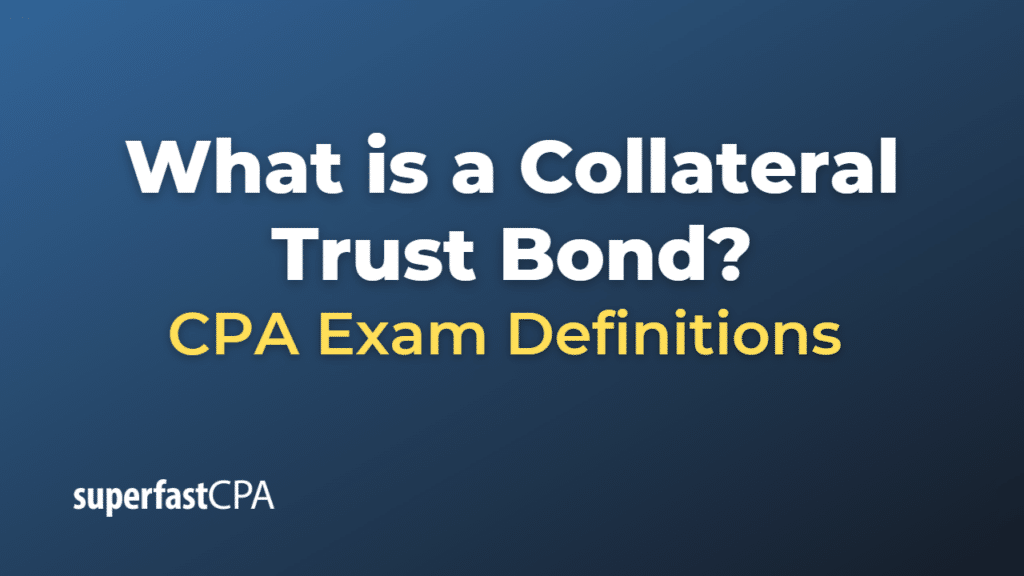Collateral Trust Bond
A collateral trust bond is a type of corporate bond that is secured by financial assets, such as stocks, bonds, or other securities, owned by the issuing corporation. These financial assets are placed in a trust and serve as collateral for the bond. If the corporation defaults on its bond payments, the trustee has the authority to seize and liquidate the assets in the trust to repay the bondholders.
Collateral trust bonds are often issued by companies that do not have a sufficient amount of physical assets, such as real estate or equipment, to secure traditional bonds. By using financial assets as collateral, these companies can still access debt financing and provide a level of assurance to bondholders that their investment is secured.
The financial assets used as collateral in a collateral trust bond are typically valued at a higher amount than the bond’s principal value to account for potential fluctuations in the value of the underlying securities. This ensures that the bondholders have sufficient protection in case the market value of the collateral declines during the term of the bond.
Collateral trust bonds can offer certain advantages to both the issuer and the bondholders. For the issuer, these bonds can provide access to debt financing without having to pledge physical assets or rely on their credit rating alone. For bondholders, collateral trust bonds can offer a higher level of security compared to unsecured bonds, as the financial assets held in trust provide a source of repayment in case of default. However, the value of the collateral can be subject to market fluctuations, which may affect the bond’s risk profile.
Example of a Collateral Trust Bond
Let’s consider an example of a company issuing a collateral trust bond:
Suppose Company XYZ is a technology firm that has a significant amount of investments in stocks and bonds but lacks substantial physical assets such as real estate or machinery. The company needs to raise $10 million to fund a new project.
To raise the required funds, Company XYZ decides to issue a collateral trust bond. The company selects a portfolio of stocks and bonds worth $12 million (to account for potential market fluctuations) and places these financial assets in a trust. The trust is managed by a trustee, who is responsible for overseeing the assets and ensuring that they remain secure for the bondholders.
Company XYZ issues the $10 million bond, offering a 5% annual interest rate with a maturity of 10 years. Investors who are interested in the bond analyze the company’s financial health, the quality of the collateral, and the bond’s interest rate to determine whether it’s a suitable investment.
As long as Company XYZ makes timely interest payments and repays the bond’s principal at maturity, the financial assets held in the trust will not be touched. However, if the company were to default on its bond payments, the trustee would have the authority to seize and liquidate the assets in the trust to repay the bondholders.
In this example, the collateral trust bond allows Company XYZ to access the necessary funds for its project while providing a level of security for investors through the collateralized financial assets. This can be particularly appealing for companies that lack substantial physical assets or want to diversify their debt financing options.













